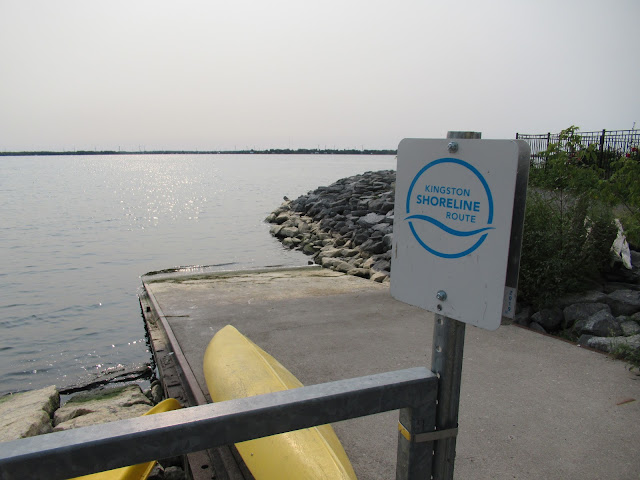One of Kingston's most controversial buildings, the Davis Tannery was located on the Inner Harbour between the slow-moving water, smelter, and its own smelly business. I would not have wanted to be downwind!
In its waning years, the polluted effluent from the plant resulted in one of Kingston's worst brownfield sites. Controversial then, its redevelopment is still controversial today.
Only recently did I connect the Davis damage to a harbour story (see below). I'd originally tracked down the story by checking weather reports for northern New York for this day in January! That allowed me to write a more informed captioned for my first book on Kingston's waterfront.
The lettering on the north side of the tannery is shown in the above line drawing. Eastern Ontario was savaged by 70 mph winds, wreaking havoc along the waterfront, demolishing this wooden building. The Davis Tannery, boldly lettered “Davis & Son, Leather Manufacturers” is visible in this view from Rideau Street. This photo was taken January 15, 1950. (Queen’s University Archives, George Lilley Fonds, V25.5-11-103) Some serious structural destruction, and there's that lettering!There's more to this story! The winds not only damaged buildings on land, but also interrupted Wolfe Island ferry service, pushing the Wolfe Islander off its usual course! The Whig made it a front page story on January 14, 1950, profiling some of the damage that seemed particularly pronounced in the downtown and the waterfront. Captain Brian Johnson of Wolfe Island ferry fame has written about that night with excerpts from the Whig's coverage. Brian begins his story with a grabber, not just dull facts. In a recently-released podcast, he discusses why this is an optimal way to start such a story!
























